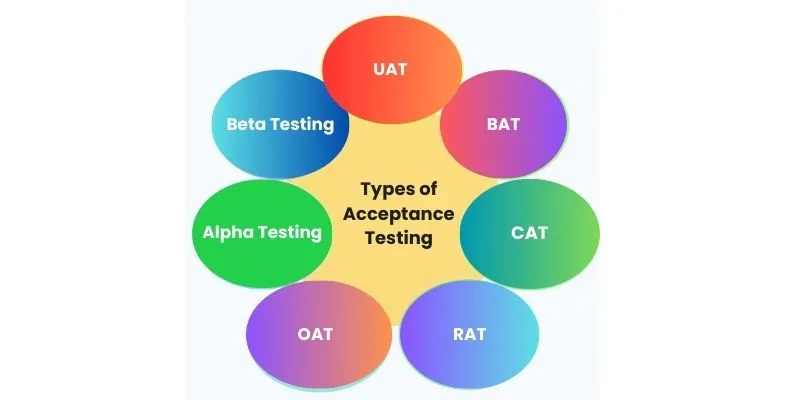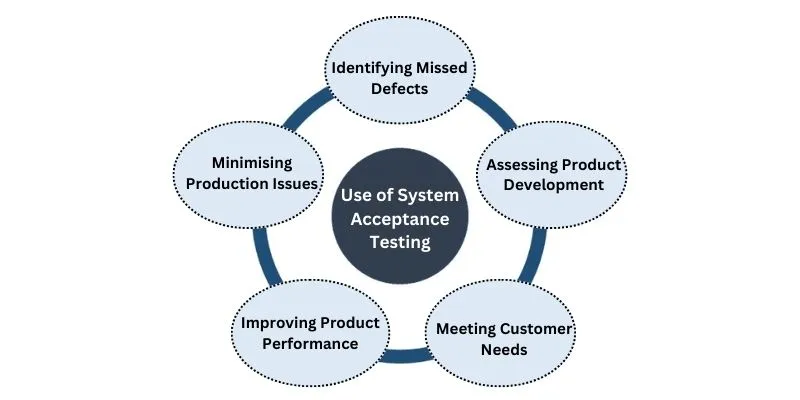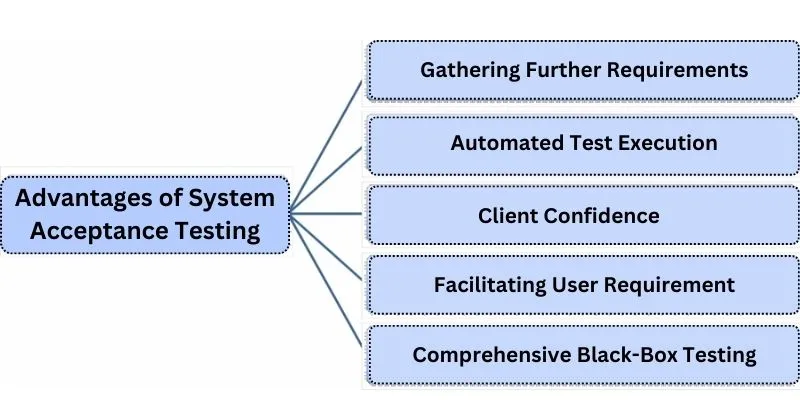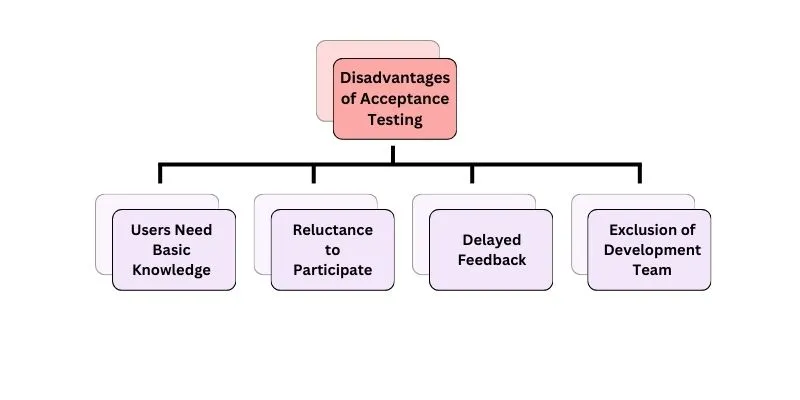
Acceptance Testing is a crucial method in software testing that focuses on determining the acceptability of a system. The primary objective of this testing phase is to assess the system's compliance with specified business requirements and ascertain whether it meets the criteria for successful delivery. Conducted as the final phase in the software testing process, Acceptance Testing occurs after System Testing and precedes the deployment of the system for actual use. For those eager to gain a comprehensive understanding of software testing methodologies, consider exploring a valuable Software Testing Course in Chennai to refine your skills and stay abreast of industry best practices.
During Acceptance Testing, the system undergoes comprehensive evaluation to ensure it aligns with the intended business functionalities and meets the expectations of end-users. The ultimate goal is to validate that the software is ready for deployment and use in real-world scenarios. This testing phase plays a pivotal role in confirming that the software product is not only technically sound but also satisfies the broader business objectives for which it was developed.
Types of Acceptance Testing

- User Acceptance Testing (UAT)
User Acceptance Testing focuses on verifying whether the product functions correctly for end-users, specifically addressing the requirements commonly used by customers. In this phase, a subset of end-users typically performs tests to ensure that the software meets their needs and expectations. The objective is to validate that the system is acceptable and ready for deployment.
- Business Acceptance Testing (BAT)
Business system acceptance testing aims to determine if the product aligns with the broader business goals and objectives. This form of testing primarily concentrates on assessing the impact of the software on business profitability. Given the challenges posed by dynamic market conditions and evolving technologies, BAT is essential for ensuring that the current implementation supports business objectives effectively.
- Contract Acceptance Testing (CAT)
Contract system acceptance testing involves a contractual agreement specifying that acceptance tests must be conducted within a predetermined period after the product goes live. This testing is tied to a Service Level Agreement (SLA), which dictates that payments will only be made if the product services align with all predefined requirements. CAT ensures contractual fulfillment and may occur before or after the product goes live.
- Regulations Acceptance Testing (RAT)
Regulations system acceptance testing evaluates whether the product complies with the rules and regulations defined by the government in the country of release. This form of testing is crucial to prevent unintentional violations that could negatively impact the business. If any rules or regulations are violated, the product may not be released in specific regions or countries.
- Operational Acceptance Testing (OAT)
Operational system acceptance testing assesses the operational readiness of the product, focusing on non-functional aspects such as recovery, compatibility, maintainability, and reliability. This type of testing ensures that the product is stable and can perform effectively before it is released to production. Future experts in the software testing industry can gain valuable insights into Operational system acceptance testing and related methodologies by enrolling in a reputable Software Testing Course in Bangalore, equipping themselves with the necessary skills to contribute effectively to software quality assurance.
- Alpha Testing
Alpha Testing is conducted in a controlled development testing environment by a specialized team known as alpha testers. The objective is to evaluate the product's functionality, uncover defects, and ensure that it meets the specified requirements. This phase occurs before beta testing and often involves an internal testing team.
- Beta Testing
Beta Testing involves exposing the product to real end-users, known as beta testers, in their actual environments. This phase allows for the collection of valuable feedback from users, identification and resolution of defects, and upgrades to improve the user experience as a whole. Beta testing occurs after alpha testing and precedes the final release of the product to the wider user base.
Use of System Acceptance Testing

- Identifying Missed Defects
Finding flaws that may have gone unnoticed in the initial stages of functional testing is one of the main goals of beta testing. By exposing the product to a diverse group of real end-users, beta testing provides an opportunity to detect issues that may not have surfaced in controlled testing environments.
- Assessing Product Development Quality
Beta testing helps in gauging the overall quality of the product's development. It serves as a real-world evaluation that goes beyond controlled testing scenarios, providing insights into how well the product functions in diverse and unpredictable environments.
- Meeting Customer Needs
Beta testing allows the product to be evaluated by actual customers, ensuring that it aligns with their expectations and requirements. Feedback from beta testers helps validate whether the product addresses real-world user needs, leading to enhancements that cater to the target audience.
- Improving Product Performance and User Experience
Feedback collected during beta testing is invaluable for enhancing the product's performance and refining the user experience. Real user input guides developers in making necessary adjustments, optimizing features, and addressing usability issues, ultimately producing a refined and easier-to-use product.
- Minimising Production Issues
By conducting beta testing before the official product release, organizations can minimize or eliminate potential issues that might arise in production. Identifying and resolving problems during the beta phase helps ensure a smoother and more reliable product launch, reducing the likelihood of widespread issues affecting a larger user base. For individuals keen on understanding the nuances of beta testing and enhancing their proficiency in software testing, consider enrolling in a comprehensive Software Testing Course in Coimbatore. This opportunity will not only broaden your knowledge but also empower you to contribute effectively to the quality assurance process in software development.
Advantages of System Acceptance Testing

- Gathering Further Requirements
Acceptance testing involves end-users directly in the testing process, providing a unique opportunity for the project team to receive direct feedback from users. This interaction helps uncover additional requirements, preferences, and insights that may not have been apparent during the earlier stages of development.
- Automated Test Execution & More About What is Acceptance Testing
Acceptance testing can leverage automated test execution tools, streamlining the testing process and enhancing efficiency. Automation allows for the systematic and repeatable execution of test cases, ensuring thorough coverage of the product's functionality and reducing the likelihood of human errors.
- Client Confidence and Satisfaction
Involving clients directly in the testing process fosters confidence and satisfaction. Clients gain firsthand experience with the product, witness its performance, and have the opportunity to provide feedback. This engagement helps build trust and assures clients that their input is valued, contributing to overall satisfaction with the final product. Check out FITA Academy to know more about this.
- Facilitating User Requirement Descriptions
Acceptance testing simplifies the process of gathering user requirements. Direct user involvement allows them to articulate their needs, preferences, and any issues they encounter in a more straightforward manner. This facilitates a clearer understanding of user expectations, enabling the development team to address specific requirements more effectively.
- Comprehensive Black-Box Testing
Acceptance testing predominantly focuses on Black-Box testing, where the internal workings of the software are not exposed. This ensures a comprehensive evaluation of the entire functionality of the product from an end-user perspective. As a result, beta testing provides a holistic assessment of the product's behavior and usability.
Disadvantages of System Acceptance Testing

- Users Need Basic Knowledge
For effective beta testing, users ideally should possess a basic understanding of the product or application. Lack of familiarity may limit their ability to provide meaningful feedback or identify specific issues. This prerequisite knowledge can sometimes be a barrier to participation for certain users.
- Reluctance to Participate
Some users may be unwilling or uninterested in actively participating in the testing process. This reluctance can stem from various reasons, including time constraints, lack of motivation, or a perception that testing is not their responsibility. Encouraging user involvement may require incentives or clear communication on the benefits of their participation. For those interested in bridging the gap between user engagement and effective testing practices, consider exploring a valuable Software Testing Course in Madurai to gain insights and skills that will empower you to navigate challenges in the dynamic field of software testing.
- Delayed Feedback and Differing Opinions
The feedback collection process in beta testing can be time-consuming, especially when involving a large number of users. Collating opinions from diverse users may result in varying perspectives and preferences. This diversity can make it challenging to prioritize and address issues efficiently, potentially leading to delays in the feedback loop.
- Exclusion of Development Team
Unlike other testing phases where the development team actively participates, beta testing typically involves end-users exclusively. While this user-centric approach is valuable, the absence of the development team during beta testing may result in a lack of immediate insight into issues identified by users. This separation could potentially lead to a delay in issue resolution or the need for additional communication channels.
Mastering the art of system acceptance testing in software development is a crucial stride towards delivering high-quality products that meet user expectations. This step-by-step guide has unraveled the intricacies of acceptance testing, providing a comprehensive roadmap for software professionals to navigate through the process seamlessly.
By emphasizing the significance of clear requirements, effective collaboration, and meticulous test case creation, this guide ensures that system acceptance testing becomes not just a routine but a strategic element in the development lifecycle. As teams adopt these methodologies, they foster a culture of continuous improvement, where feedback loops from testing phases contribute to refined software iterations.
Furthermore, the integration of automated testing tools showcased in this guide streamlines the system acceptance testing process, increasing effectiveness and lowering the possibility of human mistake. With a focus on communication and collaboration, this guide underscores the importance of involving stakeholders throughout the testing journey, aligning development efforts with end-user expectations.
In a time when customer pleasure is crucial, a well-executed system acceptance testing strategy becomes a linchpin in delivering software solutions that not only meet specifications but also resonate with the end user. Accept the knowledge provided in this tutorial, and embark on a journey towards software excellence, where system acceptance testing is not just a task but a cornerstone of success in the dynamic landscape of software. For those seeking to delve deeper into these principles, consider exploring a comprehensive Software Testing Course in Trichy to enhance your skills and contribute to the ever-evolving field of software development.
